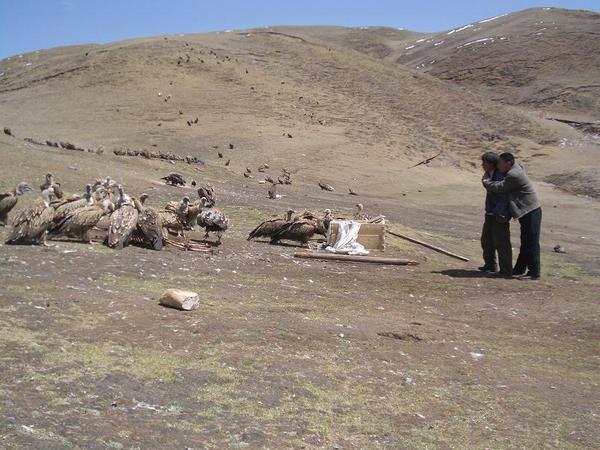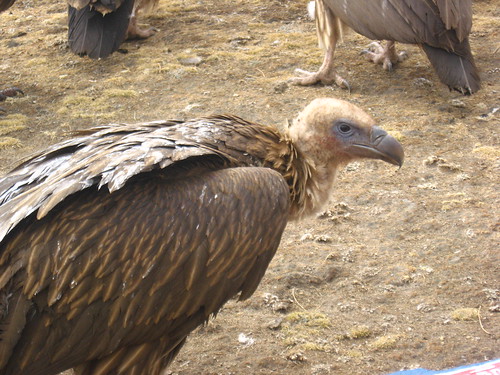
Photo: abyteofenews.wordpress.com
Although some observers have suggested that jhator is also meant to unite the deceased person with the sky or sacred realm, this does not seem consistent with most of the knowledgeable commentary and eyewitness reports, which indicate that Tibetans believe that at this point life has completely left the body and the body contains nothing more than simple flesh. Tibetans believe that the corpse is nothing more than an empty vessel. The spirit, or the soul, of the deceased has exited the body to be reincarnated into another circle of life. Sky burial is not considered suitable for children who are less than 18, pregnant women, or those who have died of infectious disease or accident.
The origin of sky burial remains largely hidden in Tibetan mystery. It is believed that the Drigung Kagyu order of Tibetan Buddhism established the tradition in this land of snow, although there are other versions of its origin. The corpse is offered to the vultures. It is believed that the vultures are Dakinis. Dakinis are the Tibetan equivalent of angels. They will take the soul into the heavens, which is understood to be a windy place where souls await reincarnation into their next lives. This donation of human flesh to the vultures is considered virtuous because it saves the lives of small animals that the vultures might otherwise capture for food. Sakyamuni, one of the Buddhas, demonstrated this virtue.
Before the day of sky burial, the corpse will be cleaned and wrapped in white cloth. The corpse will be positioned in a fetal position, the same position in which the person had been born. The ritual of sky burial usually begins before dawn. Lamas lead a ritual procession to the charnel ground, chanting to guide the soul. There are few charnel grounds in Tibet. They are usually located near monasteries. After the chanting, the body breakers prepare the body for consumption by the vultures.

Photo: G .
The body is unwrapped and the first cut is made on the back. Hatchets and cleavers are used to quickly cut the body up, in a definite and precise way. Flesh is cut into chunks of meat. As the body breakers begin, juniper incense is burned to summon the vultures for their tasks, to eat breakfast and to be Dakinis. After the body has been totally separated, the pulverized bone mixture is scattered on the ground. The birds land and hop about, grabbing for food.
To assure ascent of the soul, the entire body of the deceased should be eaten. After the bone mixture, the organs are served next, and then the flesh. This tradition arouses curiosity among those who are not Tibetan. Tibetans believe that photographing the ritual might negatively affect the ascent of the soul. However, Tibetans strongly object to visits by the merely curious. Only the funeral party will be present at the ritual.
Sources: travelchinaguide.com, wikipedia.org
No comments:
Post a Comment